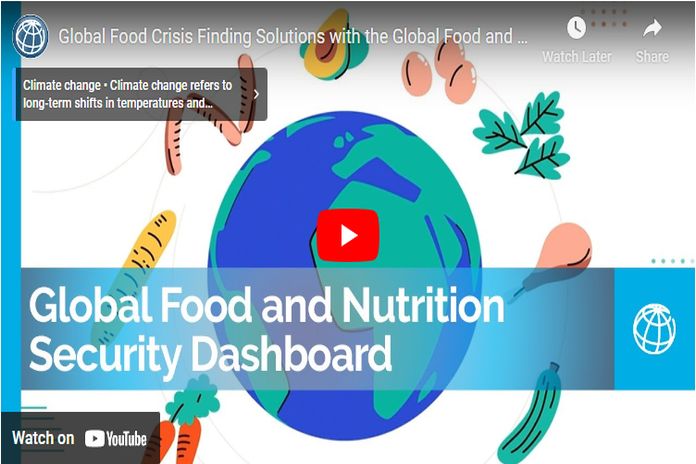- Since the last update on March 18, 2024, the agricultural and export price indices closed 8 percent and 16 percent higher, respectively, while the cereal price index closed at the same level.
- Domestic food price inflation remains high in low- and middle-income countries.
- According to the Food and Agriculture Organization (FAO), there is a pressing need for external food assistance in 45 countries worldwide.
- The latest FAO monthly report on food price trends reveals a global downturn in the prices of major cereals during February 2024.
- The FAO stresses the urgent need for transformative measures in agrifood systems to combat the escalating impact of the climate crisis on food security and agriculture.
WASHINGTON, USA – Domestic food price inflation remains high. Inflation higher than 5 percent is experienced in 60 percent of low-income countries (no increase since the last update on March 18, 2024), 63.8 percent of lower-middle-income countries (no change), 39 percent of upper-middle-income countries (7.0 percentage points lower), and 27.3 percent of high-income countries (no change). In real terms, food price inflation exceeded overall inflation in 58.9 percent of 168 countries where data is available.
Compared to two weeks ago, the agricultural and export price indices closed 8 percent and 16 percent higher, respectively, while the cereal price index closed at the same level. Driven by supply disruptions in major producer countries, cocoa prices closed 31 percent higher than two weeks ago, driving the increase in the export price index. Weather conditions and disease outbreaks have decreased cocoa crop yields.
Compared to two weeks ago, wheat prices closed 1 percent higher, and maize prices 1 percent lower, while rice prices closed at the same level [as]. On a year-on-year basis, maize prices are 31 percent lower and wheat prices 21 percent lower; rice prices are 27 percent higher. Maize prices are 13 percent higher, wheat prices 2 percent lower, and rice prices 50 percent higher than in January 2020. (See “pink sheet” data for agricultural commodity and food commodity prices indices, updated monthly.)
According to the Food and Agriculture Organization (FAO), there is a pressing need for external food assistance in 45 countries worldwide: 33 in Africa, nine in Asia, two in Latin America and the Caribbean, and one in Europe. The primary drivers of acute food insecurity in these regions are conflicts in Near East Asia and West and East Africa and widespread dry weather conditions in southern Africa. The list of countries requiring external assistance can be categorized into three broad, non-mutually exclusive groups: those with exceptional shortfalls in food production and supplies due to factors such as natural disasters, conflict, and supply chain problems; those with widespread lack of access to food due to conflict and economic factors such as low incomes and high food prices; and those with severe food insecurity in some areas due to factors such as refugee influx and crop failures combined with extreme poverty.
The latest FAO monthly report on food price trends reveals a global downturn in the prices of major cereals during February 2024, primarily due to abundant supplies and fierce competition among exporters resulting in decreases in international wheat, maize, and rice prices. Despite these international declines, domestic staple food prices remained high in many countries, primarily because of factors such as extreme weather events, conflict, insecurity, and currency depreciation. Disruptions in shipping routes, such as in the Panama Canal and the Red Sea, pose further challenges by increasing food import costs.
The FAO stressed the urgent need for transformative measures in agrifood systems to combat the escalating impact of the climate crisis on food security and agriculture. This call to action comes in response to the alarming findings of the latest UN State of the Global Climate Report, led by the World Meteorological Organization, which highlights the continuous breaking of climate change indicator records, such as surface temperatures and greenhouse gas levels, in 2023. The UN report underscores the vulnerability of the agricultural sector to climate-related risks, with drought posing a significant threat and causing a substantial portion of global damage and loss. These findings underscore the urgent need for comprehensive, coordinated efforts to address climate change impacts, mitigate risks, and build resilience within vulnerable communities worldwide.
Following Russia’s invasion of Ukraine, trade-related policies imposed by countries have surged. The global food crisis has been partially made worse by the growing number of food and fertilizer trade restrictions put in place by countries with a goal of increasing domestic supply and reducing prices. As of March 25, 2024, 16 countries have implemented 23 food export bans, and eight have implemented 15 export-limiting measures.
- World Bank response to rising food insecurity – Food-Security-Update-CIII-March-28-2024





